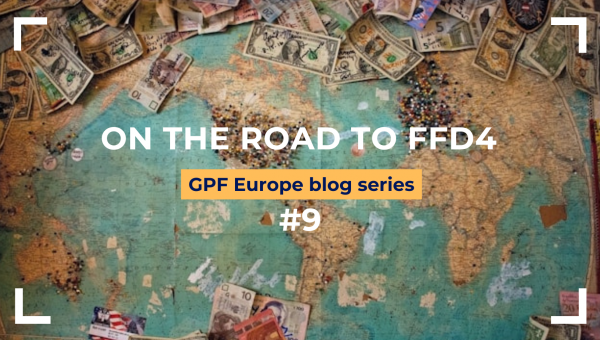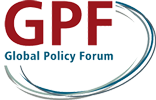News

By Bodo Ellmers
The third session of the Preparatory Committee for the International Conference on Financing for Development (FfD4) took place at the United Nations (UN) headquarters from 10-14 February 2025. It marked the first round of negotiations on the actual outcome, as the zero draft of the conference’s outcome document – intended as the world’s key multilateral agreement on development finance – was released in mid-January.
UN Member States and other stakeholders made the most of the five-day session to express their views on the 66-paragraph document, going over the content paragraph by paragraph. For the parties, as well as for the observers, this was a very informative but also a very tiring exercise. While the first sessions – which dealt with the overarching narrative and the thematic chapter on domestic resource mobilization (DRM) – ran over time, the discussion lost steam towards the end, and sessions ended early. Many actors made the most of the opportunity for in-depth discussions on pertinent issues at more than 60 side-events, indicating that the preparatory process for FfD4 is helping to raise the UN’s profile as a venue for multilateral debate on global financial policies vis-à-vis other forums.
Better late than never, the session also saw the launch of the report of the International Commission of Experts on Financing for Development. This could have been a useful tool to inform Member States’ submissions to the elements paper for the zero draft, if it had been made available three months earlier. According to the UN’s Department of Economic and Social Affairs (DESA), “the report provides a wealth of innovative ideas and fresh perspectives that are critical to shaping the future of financing for development”. However, even without such expert advice, UN Member States and other stakeholders used the PrepCom session to comment on gaps and push additional policy initiatives in the zero draft.
So what was new at PrepCom3?
Initial statements from Member States made it clear that there was a desire for FfD4 to result in a real and tangible action plan in a context where the annual financing gap for Sustainable Development Goals (SDGs) continues to grow, rather than shrink, and multilateralism overall is having a hard time. By those who have participated constructively in the PrepCom session, the FfD4 conference is seen as a chance to renew the commitment to multilateralism and reverse downward trends in development finance.
There were also calls to reflect a strong sense of urgency. While many advocated for a more operational outcome – including a clarification of the “we” referenced in many parts of the document and a clearer allocation of task and responsibilities for implementers – few offered concrete ideas about how to make the document more action-oriented.
The zero draft of the outcome document already included a number of political agreements and concrete deliverables for FfD4 (which we had already summarized in a separate blog). PrepCom3 provided an opportunity for various parties to propose additional items that they wanted to see incorporated. Below is a (non-exhaustive) list of additional ideas presented:
Debt
- Initiate a process at the 80th session of the UN General Assembly to establish an international framework convention on debt that includes a multilateral sovereign debt mechanism
- Create a high-level commission at the UN for reform of global economic governance
- Create a global debt authority
- Ensure that principles on responsible lending and borrowing are endorsed by the UN General Assembly
- Create an institutional home for the Debt Sustainability Support Service (DSSS)
- Take into account environmental risks in managing debt sustainability
- Clarify where the single debt data registry would be housed
- Reform rating methodologies to prevent punitive downgrades and build capacity of sovereign borrowers to engage with credit rating agencies
- Improve participation by MDBs in debt treatments
- Commit explicitly to debt cancellation by all creditors as an essential prerequisite to make critical investments in health, education, social protection and climate adaptation and mitigation.
Systemic issues
- Increase the basic votes of smaller and poorer International Monetary Fund (IMF) Member States
- Create a rapid-disbursing IMF instrument that provides funds until a regular programme can be approved
- Fully suspend IMF surcharges
- Promote regional liquidity mechanisms
- Create a specific facility for balance-of-payment support to net food importing developing countries.
Domestic resource mobilization (DRM)
- Support countries to establish National Development Banks (NDBs), including providing financial assistance to capitalize them;
- Strengthen commitments to eliminate secrecy jurisdictions and crack down on money laundering, including by reaffirming the UN Convention Against Transnational Organized Crime (UNTOC):
- Reference the early protocol on taxing services of the digital economy under the UN Framework Convention on International Tax Cooperation.
- Introduce or raise excise taxes on harmful substances
- Support capacity development in various areas relevant for DRM.
Private finance
- Introduce innovative de-risking instruments and promote the use of guarantees
- Reduce remittance cost to below 3% by 2030 through targeted interventions
- Promote diaspora bonds and other tailored vehicles for diaspora investors
- Promote risk-sharing in public-private partnerships in a proportionate manner
- Call on regional financial institutions to foster partnerships, tailored financial solutions and capacity building for specific regions
- Expand financial services with a particular focus on women and girls
- Strengthen spaces for countries to discuss national development plans with private investors
- Call on the philanthropy sector to close financing gaps caused by the collapse of official development assistance (ODA) in some provider countries.
- Work with stakeholders on new methodologies for credit ratings.
International public finance
- Work more with ‘beyond Gross Domestic Product (GDP)’ indicators, such as those of the Multidimensional Vulnerability Index, and apply them not only to loan allocations but also to grants.
- Expand on the discussion of the future role of the UN Development Cooperation Forum
- Increase the flexibility and adaptability of ODA, and reduce ODA earmarking to align better with recipient country priorities
- Promote country ownership and alignment in projects funded by Multilateral Development Banks (MDBs)
- Promote local procurement, doubling the contracts awarded to local actors
- Improve funding for the humanitarian aid-peace-nexus.
Trade
- Reference UN Trade and Development (UNCTAD) and the International Trade Center
- Expand Public Development Banks´ (PDBs) trade-related financing facilities targeted to Least Developed Countries (LDCs), with special windows for women and youth
- Ensure that richer countries provide full duty-free access for products coming from LDCs, and simplify rules of origin.
- Double aid for trade and dedicate more funds to build trade-related infrastructure in LDCs.
- Establish a special treatment regime for Small Island Developing States (SIDS)
- Create a common fund for commodity price stabilization
- Refrain from using unilateral trade barriers for environmental transition.
Data, monitoring and follow-up
- Clarify what role the Biennial Summit to coordinate the roles of UN and IFIs, agreed in the UN Pact for the Future, would play in the FfD4 follow-up process
- Clarify what an FfD monitoring framework would mean for the SDG 17 indicators
- Strike an appropriate balance between national indicators and those that measure how the countries interact globally
- Consider national oversight teams across multiple stakeholders to build a broad constituency for reforms.
Next steps on the road to FfD4
The debates at the PrepCom session prove that the UN’s financing for development process serves as a useful multilateral space to connect innovative thinking on FfD with multilateral dialogue and, ultimately, decision-making and institution-building. While the zero draft already contained a large number of useful and necessary innovations, PrepCom3 expanded the list and raised a potential ceiling for the FfD4 outcome. The challenge on the Road to FfD4 is to consolidate all this into a new international FfD agreement that is, in the best case, adopted and owned by the international community as a whole.
Member States have been encouraged to submit their inputs in writing and to allow their submissions to be published on the conference website, setting a high standard for transparency, especially when compared to other multilateral processes in the area of financial policy. According to the official roadmap, the first revised outcome document will be released on 10 March on the FfD4 website, when intense line-by-line negotiations are expected to begin at the ‘intersessionals’. Civil society organizations have requested that these sessions should remain transparent and accessible, they also contributed to PrepCom3 with further content and policy suggestions. The goal remains for FfD4 to produce an ambitious outcome document with concrete actions.
